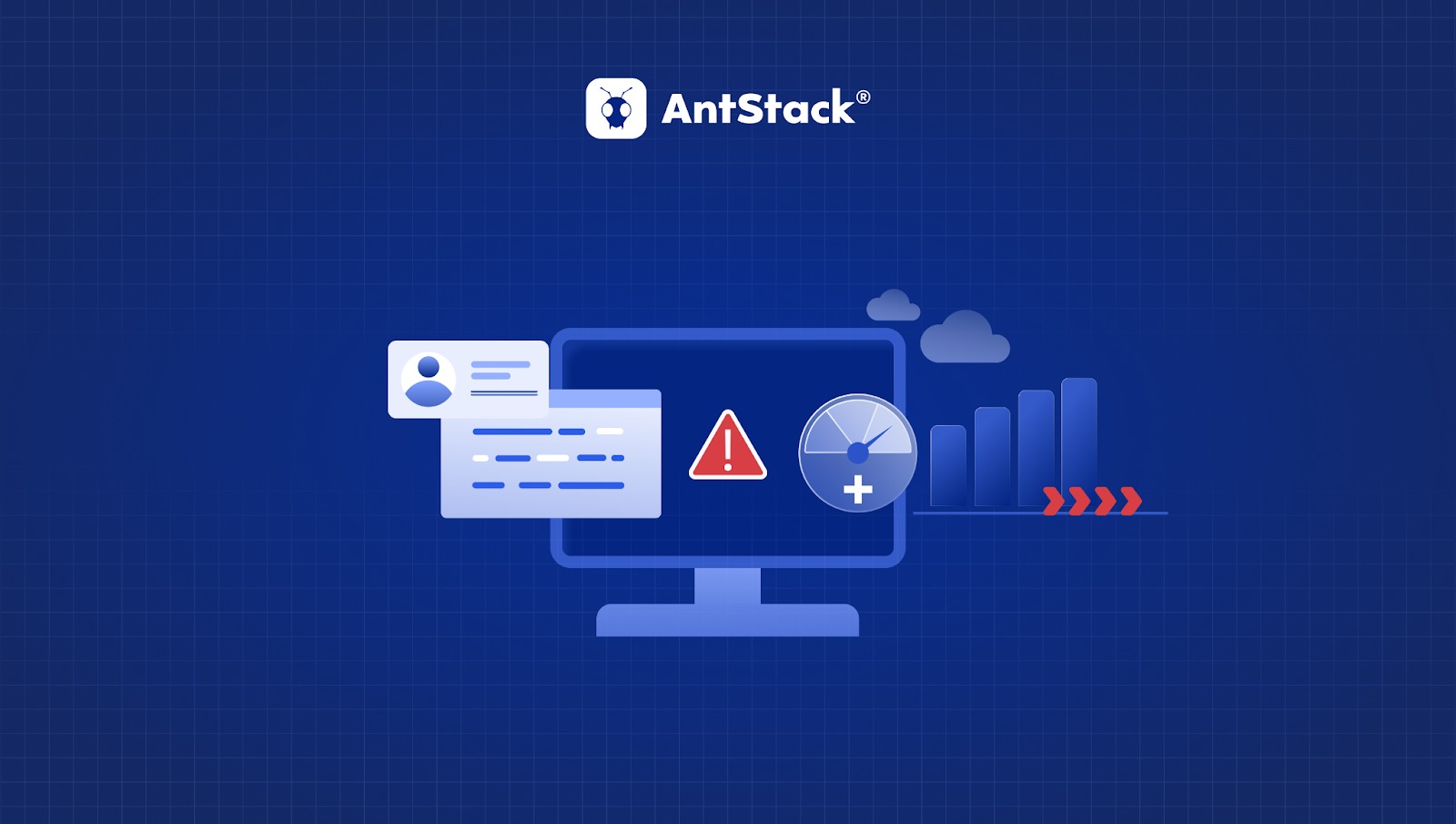What Happens to Your Patient Data in a Crisis? Build Healthcare Storage With Serverless
In a crisis, your patient data must remain secure and accessible. Serverless architecture enhances data management by offering automatic scalability and reducing vulnerability to breaches. It allows for effective integration, ensuring compliance with regulations like HIPAA and GDPR.
With serverless solutions, you can efficiently handle the high volumes and diversity of data, guaranteeing quick access even during high-demand periods. Want to discover more about optimizing your healthcare storage strategies?
The Growing Importance of Secure Patient Data Management
As healthcare data breaches increase in scale and frequency, the importance of secure patient data management becomes paramount for organizations.
Serverless healthcare solutions, particularly serverless storage healthcare and serverless applications healthcare, emerge as effective means to enhance data security. These modern architectures eliminate the need for traditional server management, reducing vulnerabilities linked to legacy systems. By utilizing cloud-based environments, you can guarantee encrypted data transmission and storage, enabling rapid compliance with evolving regulations. The recent trend of increased data breaches underscores the urgency for robust cybersecurity measures in healthcare.
Implementing robust serverless solutions not only mitigates risks of costly breaches but also optimizes your operational efficiency. These solutions provide customizable security options that can be tailored to meet specific organizational data protection requirements without significant cost increases. In an industry beset by rising breach occurrences and financial fallout, investing in secure data management through serverless technologies isn't just beneficial; it's essential for safeguarding patient information.
Understanding the Complexity of Healthcare Data Storage
You face significant challenges in managing the diverse types and volumes of healthcare data, which can overwhelm your storage infrastructure. Regulatory compliance further complicates this landscape, as you must guarantee patient data remains secure and accessible while adhering to various mandates.
The rise of remote work and telehealth has amplified the need for effective strategies to effectively integrate and protect sensitive information. Serverless architecture offers automatic scaling based on demand, eliminating the need for manual infrastructure management during healthcare crises.
Data Diversity and Volume
How do the diverse types and ever-increasing volumes of healthcare data complicate storage solutions? The complexities arise from various data types and rapid growth, making effective storage challenging. Here's what you need to contemplate:
- Variety of Data: You face clinical, administrative, financial, and operational data in multiple formats—structured, semi-structured, and unstructured. Healthcare organizations must employ data integration techniques to ensure seamless data flow across these varied sources while maintaining data integrity.
- Volume Surge: With healthcare data growing at 48% annually, driven by advancements and IoT devices, your storage demands intensify. In addition, the health disparities among different racial groups highlight the need for tailored approaches in data management.
- Integration Difficulties: Merging diverse data types from different systems requires standardization and innovative approaches, making serverless for healthcare a compelling option.
This growing diversity and volume necessitate advanced storage strategies to guarantee data coherence and accessibility while maintaining security and compliance.
Storage Infrastructure Challenges
While the healthcare sector increasingly relies on data-driven decision-making, the intricacies of storage infrastructure pose significant challenges. Traditional on-premises systems often fall short in scalability, unable to keep pace with the relentless growth of healthcare data from sources like EHRs and IoT devices.
These legacy infrastructures struggle to retain data long-term, risking potential data loss and inefficiencies during peak demands. Additionally, integrating diverse data formats from various systems complicates real-time access and effective clinical workflows.
Serverless computing offers automatic scaling capabilities that can dynamically adjust to fluctuating data volumes without manual intervention, addressing the unpredictable nature of healthcare data surges. Backup and recovery processes in outdated systems lead to vulnerabilities, jeopardizing patient safety.
Embracing cloud and hybrid solutions may provide the flexibility and resilience needed to overcome these critical storage infrastructure challenges, ensuring both data availability and regulatory compliance in a rapidly evolving healthcare environment.
Regulatory Compliance Demands
As healthcare providers navigate the complex landscape of regulatory compliance, understanding the myriad requirements for data storage becomes essential. You must adhere to several regulations to guarantee patient data's integrity and confidentiality:
- HIPAA and HITECH: These set standards for protecting electronic protected health information (ePHI) and mandate strict privacy and security controls.
- GDPR Compliance: For organizations handling EU citizens' data, strong data protection and patient consent protocols are necessary.
- State-Specific Regulations: Laws like CCPA impose additional privacy obligations, requiring tailored compliance efforts. Additionally, data governance plays a critical role in ensuring compliance with these regulations by establishing clear roles and responsibilities for managing sensitive patient data.
Meeting these regulatory demands becomes more manageable with serverless architecture, which allows healthcare organizations to focus on compliance rather than infrastructure management while automatically scaling resources based on data storage needs.
The Limitations of Traditional Data Storage Infrastructure
You’ll find that traditional data storage infrastructure in healthcare presents significant challenges, including high costs and maintenance burdens that strain budgets. Limited scalability hinders your ability to adapt to the ever-growing data demands, making expansions slow and costly.
In addition, inefficient data management leads to delays in accessing critical patient information, impacting care quality when timely decisions are essential. Moreover, these physical media storage solutions create difficulties in accessing patient data promptly, further complicating critical care situations.
High Costs and Maintenance
Given the ever-increasing demands of healthcare data management, the high costs and maintenance associated with traditional data storage infrastructure present significant challenges for providers.
The financial strain can be attributed to several factors:
- High Initial Capital Expenditure: Providers face substantial upfront investments in hardware, installation, and facilities tailored for data storage.
- Ongoing Operational Costs: Continuous expenses include IT staff salaries, power consumption, and routine maintenance, creating a burden on budgets.
- Compliance Complexity: Ensuring adherence to regulations like HIPAA involves costly security measures, audits, and ongoing monitoring.
These challenges can strain resources, especially for smaller healthcare providers, limiting their ability to utilize cutting-edge technologies effectively, ultimately impacting their capability to deliver quality patient care efficiently.
Limited Scalability Challenges
The high costs and maintenance of traditional data storage infrastructure directly correlate with significant limitations in scalability, particularly in the healthcare sector.
As you face rapidly growing data volumes from electronic health records, imaging, and genomics, legacy systems struggle to keep pace. Their inability to efficiently manage diverse data types leads to performance bottlenecks and silos, complicating integration and diminishing usability.
Physical storage constraints further limit scalability, requiring substantial space and resources that become impractical for large providers. Additionally, hardware-based expansions demand costly investments and skilled personnel, impeding your ability to respond swiftly to data growth.
These challenges risk disruption to critical patient care workflows, underscoring the urgent need for more adaptable storage solutions.
Inefficient Data Management Issues
As healthcare organizations accumulate vast amounts of data from diverse sources, traditional data storage infrastructures reveal significant inefficiencies that hinder effective data management.
These shortcomings manifest in several critical areas:
- Security Vulnerabilities: On-premises systems place the full burden of security on you, exposing patient data to risks from theft, natural disasters, or insufficient monitoring.
- High Costs: Upfront installation and ongoing maintenance expenses create financial strain, particularly with limited IT resources for managing complex systems.
- Data Fragmentation: Scattered data across siloed systems restricts accessibility and hinders interoperability, complicating patient care and compliance efforts.
These limitations not only restrict operational efficiency but also jeopardize patient data integrity and regulatory adherence in an increasingly demanding healthcare environment.
How Serverless Architecture Revolutionizes Data Handling
When it comes to revolutionizing data handling in healthcare, serverless architecture stands out as a game changer, allowing organizations to process large volumes of data efficiently and with remarkable speed.
| Key Features | Benefits |
| Scalability | Adjusts automatically during demand peaks |
| Reduced Latency | Improves performance through local processing |
| Cost-Efficiency | Operates on a pay-per-use model |
This architecture enhances operational capacity and minimizes costs, making it ideal for a demanding healthcare environment. You’ll experience faster data processing with reduced idle infrastructure costs. By leveraging serverless solutions, you guarantee compliance with regulations while managing and maximizing your data security. As a result, you can focus on providing quality care rather than worrying about your data handling capabilities.
Navigating Data Management During Crisis Situations
Effective data management becomes even more critical during crisis situations, where timely access to accurate information can greatly impact healthcare outcomes.
You face several challenges that can hinder response efforts, including:
- Data Silos: Legacy systems can lead to outdated information, complicating decision-making.
- Scalability Issues: Rapidly growing data volumes may overwhelm non-scalable systems.
- Integration Challenges: Integrating diverse data sources is essential for thorough crisis management.
Navigating these issues demands a strategic approach, ensuring data quality and security while facilitating real-time analysis.
You must also focus on modeling and visualization techniques to provide insights that drive effective crisis response.
Ultimately, proficient data management equips you to make informed decisions, mitigating the adverse effects of crisis scenarios.
Implementing Best Practices for Healthcare Data Storage
To successfully traverse the complexities of healthcare data storage, you must adopt a set of best practices that prioritize security, compliance, and resilience.
Begin by evaluating your storage solutions—on-premises options offer direct control, while cloud models provide scalability for large data volumes. Verify compliance with HIPAA by conducting regular security risk evaluations and maintaining detailed audit trails.
Implement robust security measures like encryption and multi-factor authentication, coupled with physical security protocols.
Emphasize redundancy through data replication and backups to prevent loss during failures.
Regularly monitor performance, adjusting as necessary, while continuously reviewing your vendors to guarantee they meet healthcare security standards.
Together, these practices build a resilient data storage framework essential for traversing crises effectively.
Frequently Asked Questions
How Does Serverless Architecture Ensure Compliance With Healthcare Regulations?
Imagine building a fortress; serverless architecture fortifies compliance by integrating strict access controls, data encryption, and continuous monitoring. You mitigate risks while ensuring patient data remains secure, adhering to crucial regulations like HIPAA effortlessly.
What Types of Data Are Most Vulnerable During a Crisis?
During a crisis, patient names, birth dates, social security numbers, clinical notes, and prescription information are most vulnerable. These data types are heavily targeted, especially under increased pressure on healthcare IT infrastructures and cyber threats.
How Can Healthcare Providers Assess Their Current Data Storage Risks?
Imagine traversing a maze; to assess data storage risks, you need a roadmap. Evaluate employee access, third-party agreements, and network weaknesses. Regularly reassess and strengthen your defenses—only then can you guarantee data security and integrity.
What Costs Are Associated With Transitioning to Serverless Data Storage?
Shifting to serverless data storage involves costs for technical expertise, security measures, compliance, and managing potential vendor lock-in. Additionally, factor in the expenses of addressing cold start latency and ongoing operational efficiencies for budgeting.
How Do Serverless Solutions Accommodate Legacy Systems in Healthcare?
Serverless solutions seamlessly integrate legacy systems through API wrappers, allowing you to preserve existing code. This decouples dependencies, reduces risks during modernization, and maintains essential functionality while enhancing scalability and compliance in healthcare environments.
Conclusion
As you navigate the complexities of healthcare data management, the choice you make in storage can be the difference between chaos and clarity during a crisis. Embracing serverless architecture not only enhances security but fosters agility in responding to unforeseen challenges. You might wonder if your current systems are robust enough to handle the storm. The time for complacency is over, it's essential to act now, ensuring your patient data remains protected when it matters most.




